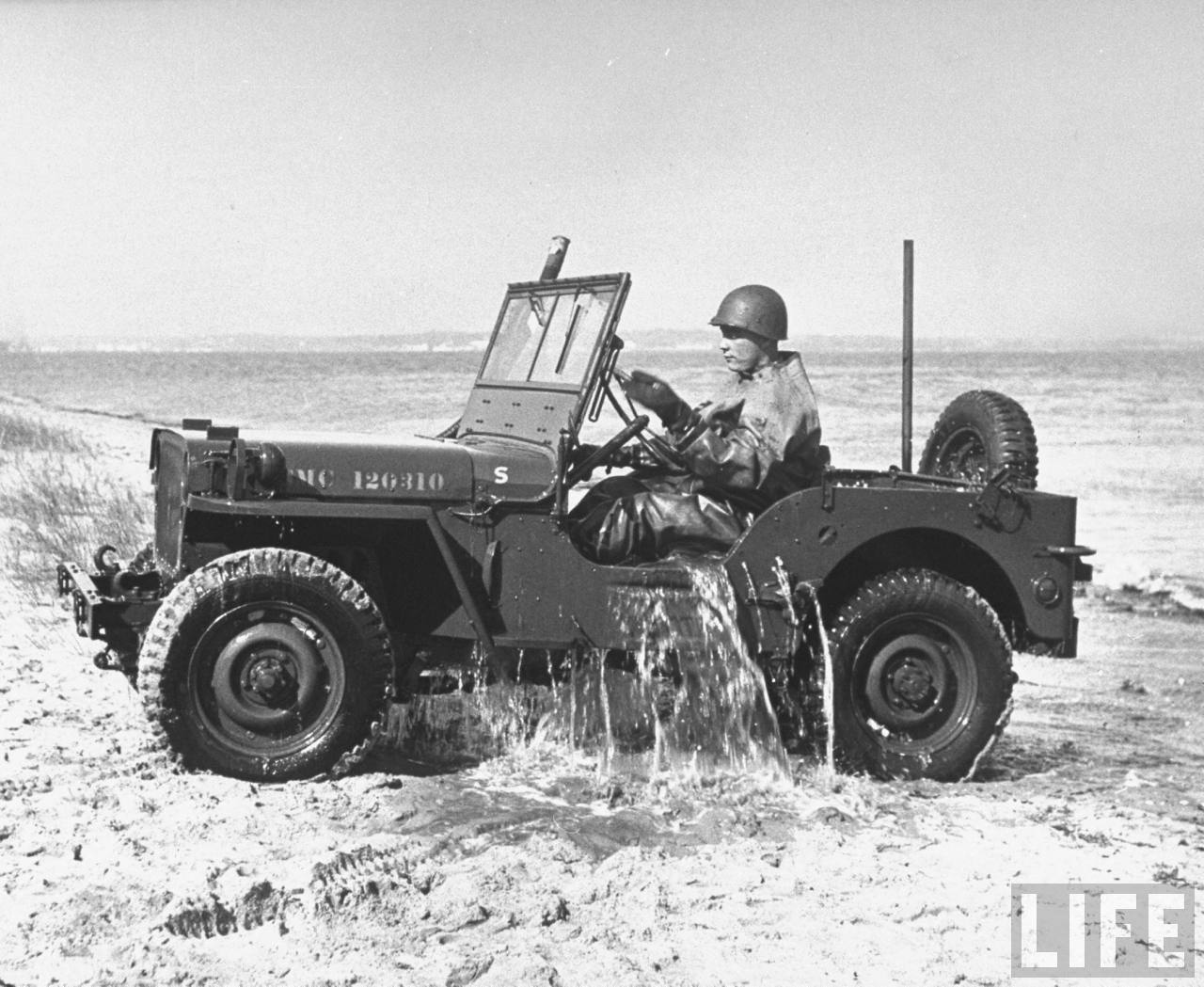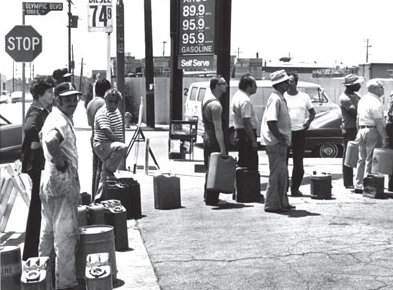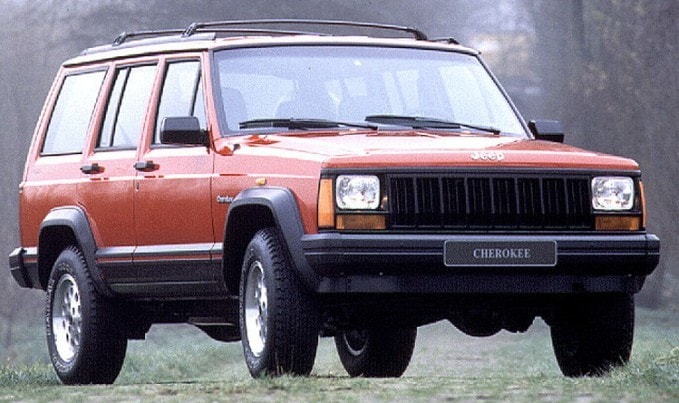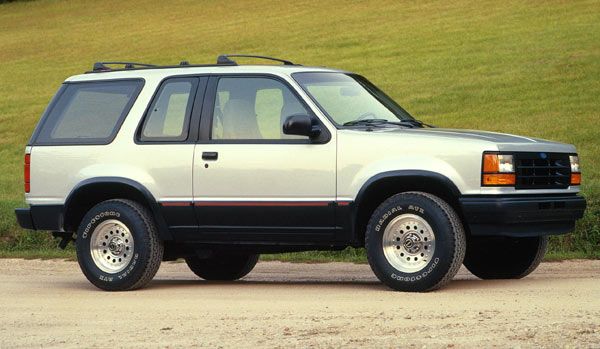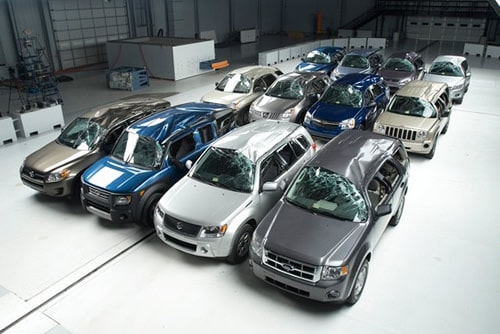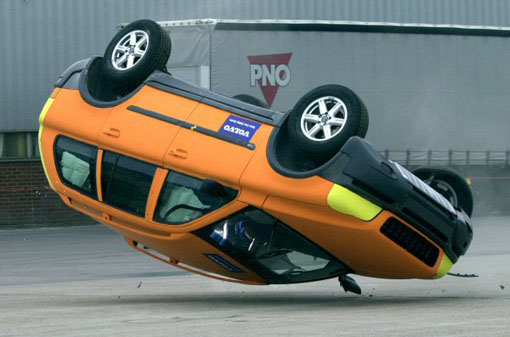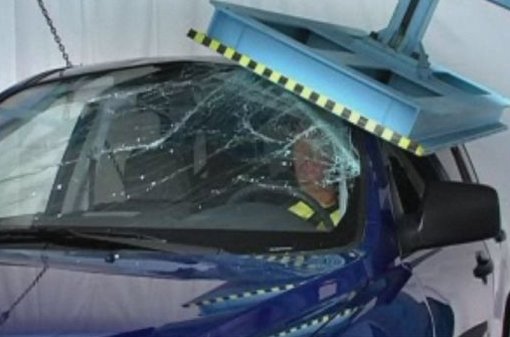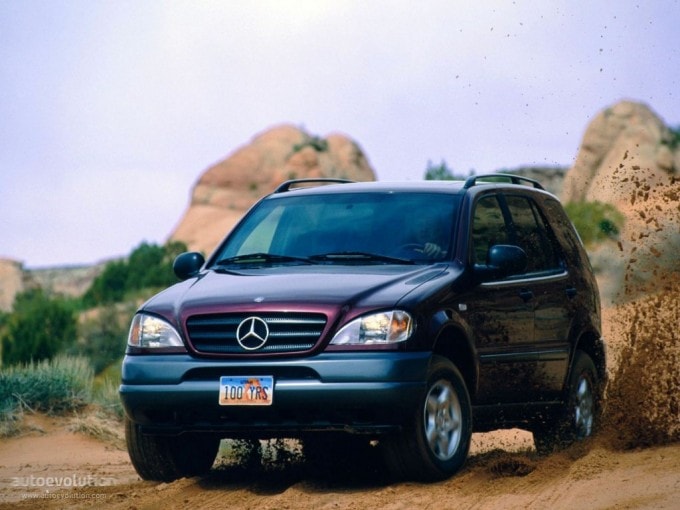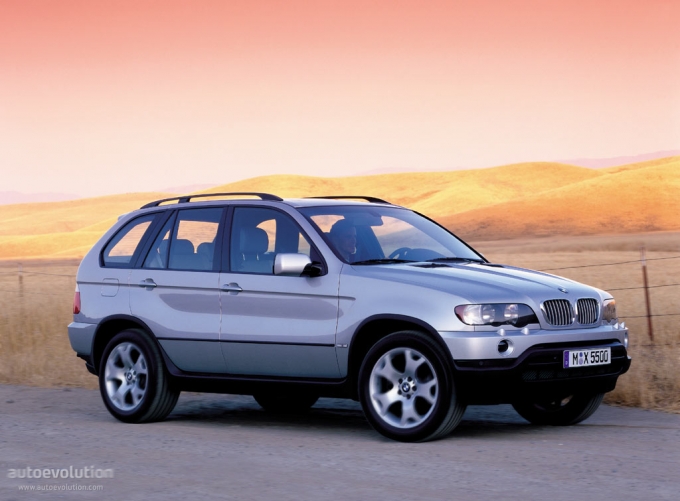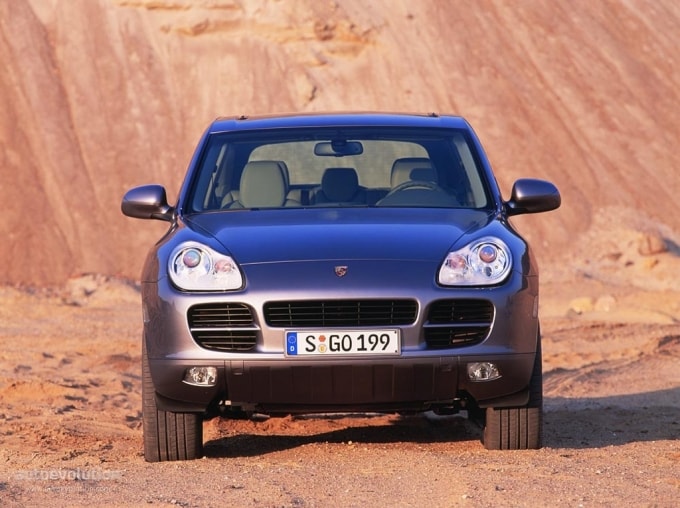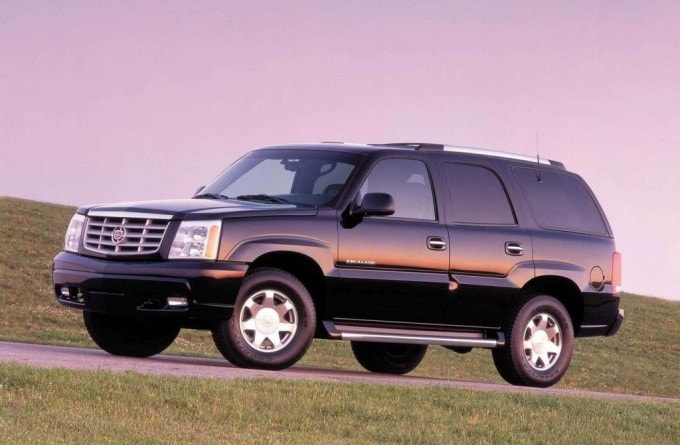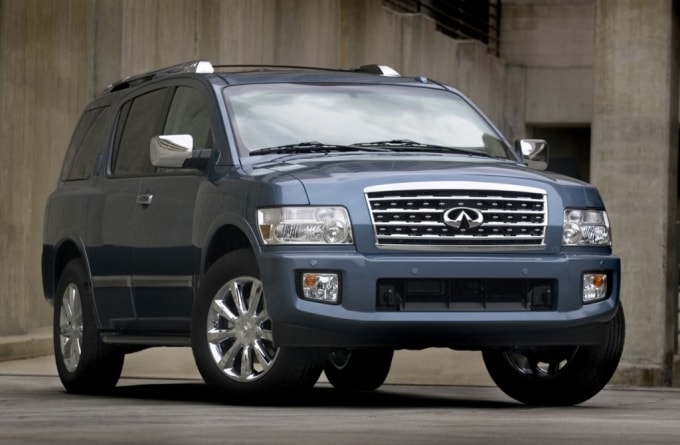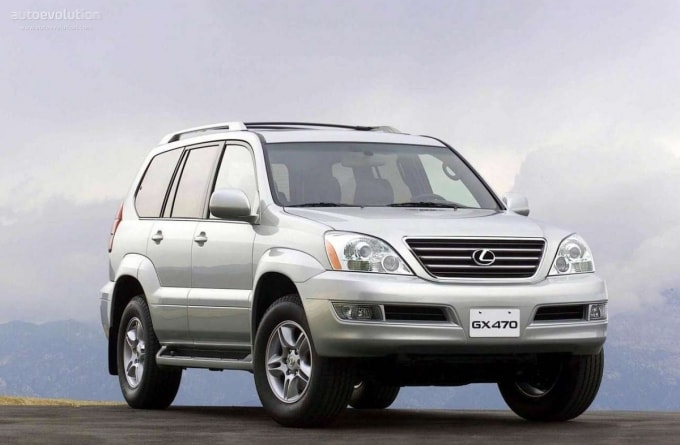With a little under three decades of history behind it, the mass production Sport Utility Vehicle, or SUV, as the class is known today, has grown from a car built with a specific consumer group in mind to one of the most sought after vehicles on the road.
The strange combination between a family car and a pure bread off-roader has become so appealing that today, there is no single manufacturer who does not have, or at least that doesn't plan to have an SUV in its line-up.
Ever wondered why? Who thought of the SUV first, why, and what did they have planned for it? What's so catchy about an oversized hatchback with 4x4 capabilities that appeals to the consumers so much? After all, most of SUV owners rarely take it off tarmac to test all that four wheel drive...
FIRST SPARKS
The roots of the 4x4 for the masses can be traced, as you might have guessed, all the way back to the World War Two and the stars of the muddy terrains of the time: the military Jeep and the Land Rover. Of course, they were in an entirely other class than current SUVs in terms of both use and design; the 4x4 traction system on the other hand is as old as the self propelled vehicle itself.
As the war ended, the technologies used for the development of the military 4x4s were converted for civilian use as well. We will not cover all the stages through which the SUV as we know it came to be.
The SUV concept, although not as we perceive it today, exists, as we said, ever since the late 1930's. They came in the shape of the 1938 GAZ-61 or the Willys Jeep Station Wagon of 1946. But, in all respects, they were not SUVs, as we understand them today, nor did they spawn some breakthrough technologies to be used for the current SUVs.
The SUV as we know it today is a combination between a family car and an off-roader. A vehicle which allows you to take the kids both to school and on off-road tracks, while keeping them safe in the process.
It all began in the late 1970s, when the until then profitable American Motors Corporation (AMC) began feeling the heat of the economic downturn. It was the same year when the Iranian Revolution sparked the so called energy crisis. For the US, that meant the price of crude oil soared from $15.85/barrel to $39.50 in just one year (it remained the all time highest price all the way until 2008).
At the time, it was calculated that American cars were using about 150,000 barrels (24,000 m3) of oil each day JUST BY WAITING IN LINE AT THE GAS STATIONS!
The US turned to the Corporate Average Fuel Economy (CAFE) regulation, first adopted in 1975. Specially created to force manufacturers into complying with imposed fuel consumption limits, CAFE was just what the industry needed to spark the SUV. The CAFE implementation posed great challenges for the American manufacturers, who found that Japanese passenger cars, unlike domestic ones, had no problem complying with the regulations.
At the time, CAFE standard for passenger cars stood at 19 mpg, while for light trucks, the requirements were 17.2 mpg for 2WD versions and 15,8 mpg for 4WD. They basically remained the same until earlier this year, when the US decided to increase the mileage.
AMC needed to think both fast and radical on how to revert the declining finances and find ways to meet the standars. French manufacturer Renault on the other hand, which kept pumping money into AMC ever since it acquired the first slice of the US manufacturer in 1979, also badly needed a way to stale critics in the home country.
The Cherokee used different type of engines, like the AMC 2.5l straight four engine, developing in between 105 and 130 hp or the GM LR2 2.8l V6, developing 110 hp. They were both introduced in 1984.
The new Cherokee had nothing in common with the earlier version, the SJ. It had a shorter wheelbase and length and it was also lighter. Weight was saved by designing a smaller engine than found in the 4WDs of the time. This in turn helped the car achieve better mileage, while the fact that it was offered in both two- and four-door body styles appealed to a segment of the population until then not accustomed with the 4x4 phenomenon.
At the time when the Cherokee appeared, during the 1980s, the energy crisis began to diminish. Fuel prices began decreasing again, while interest rates for loans followed the same path. Demographics and the population's choice of recreational interests also changed, making room for a more active, trip oriented individual. Soon, the SUV maker would find that an increasing number of women chose to buy, or at least advised their spouses to buy an SUV...
The smaller Cherokee, tucked in between the consumers taste for comfort and his/her adventurous nature, was just the thing people needed.
As a result, AMC was sold to Chrysler, who discontinued the use of both the AMC and Renault names in the US, leaving only the Jeep name to carry on the legacy of the two. This meant, in fact, that the SUV battle will from now on be waged between the Detroit Big Three.
GM, Chrysler and Ford soon found they could use the AMC innovation to dogde CAFE regulations, by registering their SUVs as trucks. This minor loophole allowed them to spare R&D money for new engines and stick with the gas guzzler units of the time, while at the same time meeting ths standars.
Witnessing the success of the Cherokee, competitor Ford debuted in 1991 the Ford Explorer, the model which will become the iconic SUV of modern days. It was with the Explorer the SUV name caught on, as it was the quintessential representation of both sports and utility, in one user friendly package.
The first generation Explorer lasted some three years. When it was released, in 1990, it was powered by a 4.0l V6 engine, developing 155 hp. Ford used as the basis for its construction both the Bronco II (sold until then as a truck), which it replaced, and the Ranger pick-up, on who's platform it was based. By 1999, Ford was selling in excess of 400,000 units of the Explorer each year.
Hence, rollover became a problem not for the Cherokee, but for the Explorer. A combination of factors, including a bad way to solve an engineering issue and the fact that Ford sold lots of SUVs, made rollover become at one point a case of national interest.
The rollover issue had been recognized by Ford ever since the first generation Explorer. According to the company's internal documents, engineers had recommended changes to the vehicles, as a result of a company rollover test, which didn't turn out so great for the car.
Ford chose the easy way out and decided not to change the suspension or the width of the car. Instead, they began recommending the tire pressure to be set at 26 psi. A minor tweak, which will soon turn into a huge scandal.
By 2000, SUV rollovers began entering the public eye. The National Highway Traffic Safety Administration (NHTSA) was forced to ask Ford why their vehicles liked to go wheels-up so often. Ford reply: it is Firestone's fault.
According to the Ford inquiry, Firestone, the tire supplier for the Explorer, stamped on the walls of the tires 35 psi, contrary to the carmaker's indications. As a result, ALL of the tire failures which led to rollovers involved tread separation, followed by the tires disintegration and, eventually, the vehicle going wheels-up.
The physics behind this behaviour is very simple. When the tire blew, a sudden jerk was sent through the steering wheel. Reacting like all drivers would, Explorer owners tried to swing the wheel in the opposite direction, making the car's center of weight shift to the side. This sent the SUV on its back.
The rollover problem caused an estimated 250 deaths and over 3,000 serious injuries. As a result of the findings, Ford and Firestone broke their ties, the tire maker closed the Decatur, Illinois plant, where the faulty tires were made, countless lawsuits were filed against both manufacturers, while sales...Well, sales were not that affected. Even more, contrary to what everybody expected, sales of the SUVs picked up again in under one year....Why?
It didn't take much for the SUV to catch on. Tens of models have been developed at just about the same time, even if the Cherokee takes the lead for being "the first of its kind." Even manufacturers who traditionally where not part of the truck-pick-up-jeep-SUV segment, like Porsche or Cadillac, set out to develop one.
Once the rollover hickup was dealt with, the SUVs really took off. Several manufacturers were already building SUVs, including the American's "nemesis", Japanese carmakers. The battle between the US and Japan in terms of SUVs lasted until "ze Germans got there."
From 1997, the SUV game is played following a different set of rules. It was the year when German manufacturer Daimler started the European luxury SUV assault. The ML-Klasse was soon followed by the BMW X5 (2000), Porsche Cayenne (2002), Volkswagen Touareg (2002), and the final arrival, the Audi Q7 (2006).
The US had to respond quickly, and they did with the release of the Cadillac Escalade in 2000, as well as with more and more luxurios versions of the Ford Explorer and Jeep Cherokee (now named Grand Cherokee)...The Japanese replied with the creation of the Infiniti QX56 or Lexus GX...
Since its original conception, the SUV line has split into different branches, creating small, medium and large SUVs, crossover SUVs and so on. With the luxury segment getting more crowded, the focus has now shifted to the creation of hybrid SUVs, electric SUVs, clean diesel SUVs...
The involvement of the German carmakers especially brought on the rise of the luxury SUV, a combination between a Range Rover-like workhorse and a Mercedes AMG-like brute, all neatly wrapped in Nappa or Alcantara leather. The almost 3 decades past since the Cherokee built the new path have all the chances to turn into many more, in the perhaps most dynamic segment of the industry.
As the war ended, the technologies used for the development of the military 4x4s were converted for civilian use as well. We will not cover all the stages through which the SUV as we know it came to be.
The SUV concept, although not as we perceive it today, exists, as we said, ever since the late 1930's. They came in the shape of the 1938 GAZ-61 or the Willys Jeep Station Wagon of 1946. But, in all respects, they were not SUVs, as we understand them today, nor did they spawn some breakthrough technologies to be used for the current SUVs.
The SUV as we know it today is a combination between a family car and an off-roader. A vehicle which allows you to take the kids both to school and on off-road tracks, while keeping them safe in the process.
CONCEPTION
Several market conditions had to occur at about the same time to make the advent of the SUV possible. And all had to happen, where else, in America...It all began in the late 1970s, when the until then profitable American Motors Corporation (AMC) began feeling the heat of the economic downturn. It was the same year when the Iranian Revolution sparked the so called energy crisis. For the US, that meant the price of crude oil soared from $15.85/barrel to $39.50 in just one year (it remained the all time highest price all the way until 2008).
At the time, it was calculated that American cars were using about 150,000 barrels (24,000 m3) of oil each day JUST BY WAITING IN LINE AT THE GAS STATIONS!
The US turned to the Corporate Average Fuel Economy (CAFE) regulation, first adopted in 1975. Specially created to force manufacturers into complying with imposed fuel consumption limits, CAFE was just what the industry needed to spark the SUV. The CAFE implementation posed great challenges for the American manufacturers, who found that Japanese passenger cars, unlike domestic ones, had no problem complying with the regulations.
At the time, CAFE standard for passenger cars stood at 19 mpg, while for light trucks, the requirements were 17.2 mpg for 2WD versions and 15,8 mpg for 4WD. They basically remained the same until earlier this year, when the US decided to increase the mileage.
AMC needed to think both fast and radical on how to revert the declining finances and find ways to meet the standars. French manufacturer Renault on the other hand, which kept pumping money into AMC ever since it acquired the first slice of the US manufacturer in 1979, also badly needed a way to stale critics in the home country.
THE INDIAN THAT SAVED THE DAY
Salvation came in the form of the 1984 Jeep Cherokee (XJ), a model which was under development ever since 1979. It was the first vehicle of its type to use a ladder-boxed chassis, paired with a unibody construction (monocoque) instead of a body-on-frame one. The design of the XJ was handled by Richard Teague, the company's main designer, together with his team of engineers.The Cherokee used different type of engines, like the AMC 2.5l straight four engine, developing in between 105 and 130 hp or the GM LR2 2.8l V6, developing 110 hp. They were both introduced in 1984.
The new Cherokee had nothing in common with the earlier version, the SJ. It had a shorter wheelbase and length and it was also lighter. Weight was saved by designing a smaller engine than found in the 4WDs of the time. This in turn helped the car achieve better mileage, while the fact that it was offered in both two- and four-door body styles appealed to a segment of the population until then not accustomed with the 4x4 phenomenon.
At the time when the Cherokee appeared, during the 1980s, the energy crisis began to diminish. Fuel prices began decreasing again, while interest rates for loans followed the same path. Demographics and the population's choice of recreational interests also changed, making room for a more active, trip oriented individual. Soon, the SUV maker would find that an increasing number of women chose to buy, or at least advised their spouses to buy an SUV...
The smaller Cherokee, tucked in between the consumers taste for comfort and his/her adventurous nature, was just the thing people needed.
PASSING THE TORCH
Renault's involvement with the American manufacturer ended in 1987 when French executives, named after the assassination of the company's CEO, Georges Besse, one year earlier, decided not to continue funding AMC and pulled out entirely.As a result, AMC was sold to Chrysler, who discontinued the use of both the AMC and Renault names in the US, leaving only the Jeep name to carry on the legacy of the two. This meant, in fact, that the SUV battle will from now on be waged between the Detroit Big Three.
GM, Chrysler and Ford soon found they could use the AMC innovation to dogde CAFE regulations, by registering their SUVs as trucks. This minor loophole allowed them to spare R&D money for new engines and stick with the gas guzzler units of the time, while at the same time meeting ths standars.
Witnessing the success of the Cherokee, competitor Ford debuted in 1991 the Ford Explorer, the model which will become the iconic SUV of modern days. It was with the Explorer the SUV name caught on, as it was the quintessential representation of both sports and utility, in one user friendly package.
The first generation Explorer lasted some three years. When it was released, in 1990, it was powered by a 4.0l V6 engine, developing 155 hp. Ford used as the basis for its construction both the Bronco II (sold until then as a truck), which it replaced, and the Ranger pick-up, on who's platform it was based. By 1999, Ford was selling in excess of 400,000 units of the Explorer each year.
ROLLING (OVER) IN A SUV
Being by definition larger than their sedan counterparts, SUVs had a major disadvantage: they had a tendency to roll upside down when cornering at high speeds or jerking the steering wheel, due to their higher center of weight. This tendency had already been noticed by AMC engineers, which solved it with the introduction of the Quadra-Link suspension, the brain child of Roy Lunn.Hence, rollover became a problem not for the Cherokee, but for the Explorer. A combination of factors, including a bad way to solve an engineering issue and the fact that Ford sold lots of SUVs, made rollover become at one point a case of national interest.
The rollover issue had been recognized by Ford ever since the first generation Explorer. According to the company's internal documents, engineers had recommended changes to the vehicles, as a result of a company rollover test, which didn't turn out so great for the car.
Ford chose the easy way out and decided not to change the suspension or the width of the car. Instead, they began recommending the tire pressure to be set at 26 psi. A minor tweak, which will soon turn into a huge scandal.
By 2000, SUV rollovers began entering the public eye. The National Highway Traffic Safety Administration (NHTSA) was forced to ask Ford why their vehicles liked to go wheels-up so often. Ford reply: it is Firestone's fault.
According to the Ford inquiry, Firestone, the tire supplier for the Explorer, stamped on the walls of the tires 35 psi, contrary to the carmaker's indications. As a result, ALL of the tire failures which led to rollovers involved tread separation, followed by the tires disintegration and, eventually, the vehicle going wheels-up.
The physics behind this behaviour is very simple. When the tire blew, a sudden jerk was sent through the steering wheel. Reacting like all drivers would, Explorer owners tried to swing the wheel in the opposite direction, making the car's center of weight shift to the side. This sent the SUV on its back.
The rollover problem caused an estimated 250 deaths and over 3,000 serious injuries. As a result of the findings, Ford and Firestone broke their ties, the tire maker closed the Decatur, Illinois plant, where the faulty tires were made, countless lawsuits were filed against both manufacturers, while sales...Well, sales were not that affected. Even more, contrary to what everybody expected, sales of the SUVs picked up again in under one year....Why?
KING OF THE ROAD
As all and any drivers out there, SUV owners need to feel like they own the road, as a survey conducted by GM established at the time. A few hundred deaths here and there are no deterrent in choosing a SUV as a family car. Its intimidating size, off-road capabilities and shopping mall-friendly attitude recommend the SUV as THE CAR to own. It's big enough to accommodate the family, small enough to fit in the urban traffic and sporty enough to tickle the driver's ego.It didn't take much for the SUV to catch on. Tens of models have been developed at just about the same time, even if the Cherokee takes the lead for being "the first of its kind." Even manufacturers who traditionally where not part of the truck-pick-up-jeep-SUV segment, like Porsche or Cadillac, set out to develop one.
Once the rollover hickup was dealt with, the SUVs really took off. Several manufacturers were already building SUVs, including the American's "nemesis", Japanese carmakers. The battle between the US and Japan in terms of SUVs lasted until "ze Germans got there."
From 1997, the SUV game is played following a different set of rules. It was the year when German manufacturer Daimler started the European luxury SUV assault. The ML-Klasse was soon followed by the BMW X5 (2000), Porsche Cayenne (2002), Volkswagen Touareg (2002), and the final arrival, the Audi Q7 (2006).
The US had to respond quickly, and they did with the release of the Cadillac Escalade in 2000, as well as with more and more luxurios versions of the Ford Explorer and Jeep Cherokee (now named Grand Cherokee)...The Japanese replied with the creation of the Infiniti QX56 or Lexus GX...
Since its original conception, the SUV line has split into different branches, creating small, medium and large SUVs, crossover SUVs and so on. With the luxury segment getting more crowded, the focus has now shifted to the creation of hybrid SUVs, electric SUVs, clean diesel SUVs...
The involvement of the German carmakers especially brought on the rise of the luxury SUV, a combination between a Range Rover-like workhorse and a Mercedes AMG-like brute, all neatly wrapped in Nappa or Alcantara leather. The almost 3 decades past since the Cherokee built the new path have all the chances to turn into many more, in the perhaps most dynamic segment of the industry.
